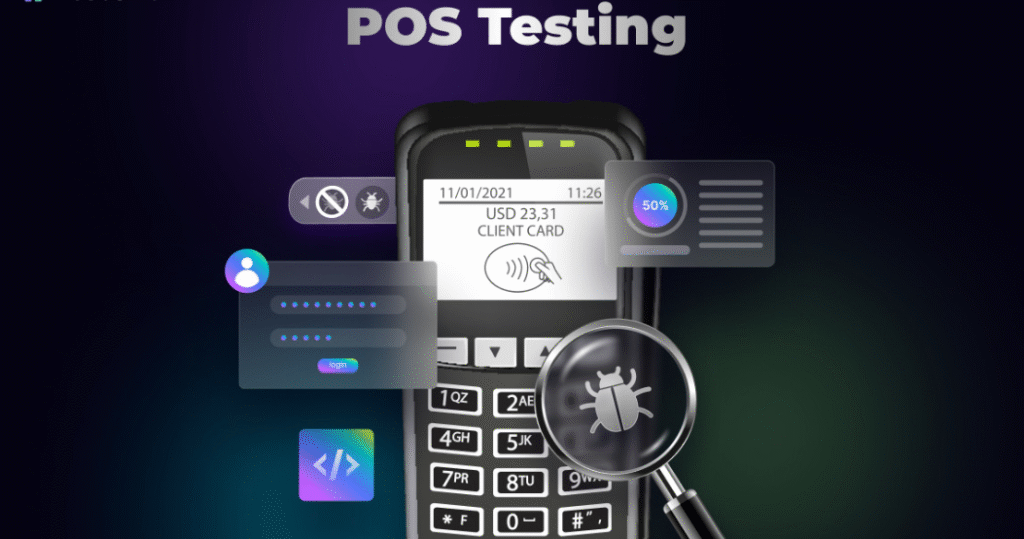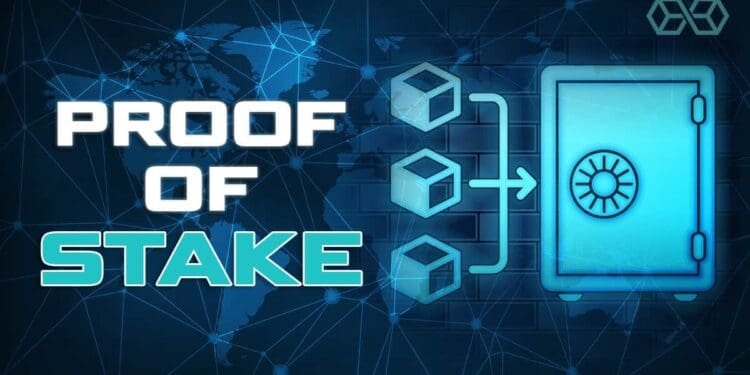Proof-of-Stake (PoS) is transforming blockchain technology, offering an energy-efficient alternative to Proof-of-Work (PoW). Networks like Ethereum (post-2022 Merge) use PoS to secure transactions and reward validators. If you’re a developer eager to create your own PoS blockchain, this beginner-friendly tutorial will guide you through building a simple PoS network from scratch using JavaScript and Node.js. Let’s get started!

What Is Proof-of-Stake?
In a PoS blockchain, validators stake their cryptocurrency (e.g., tokens) to participate in securing the network. Validators are chosen to create new blocks based on their stake, and they earn rewards for honest behavior. Unlike PoW, which relies on energy-intensive mining, PoS is eco-friendly and scalable, making it ideal for modern blockchains.
Our goal is to build a basic PoS network where nodes stake tokens, validate transactions, and reach consensus.
Tools You’ll Need
To build your PoS network, gather these tools:
- Node.js: For running JavaScript code. Download from nodejs.org.
- Express: A Node.js framework for creating a network API. Install via npm.
- Crypto Library: Node.js’s built-in crypto module for hashing and signatures.
- Code Editor: Visual Studio Code or any editor you prefer.
- Git: For version control (optional). Get it from git-scm.com.
With these, you’re ready to build a PoS blockchain network.

Step-by-Step: Building Your PoS Network
We’ll create a simple PoS blockchain where nodes stake tokens to become validators, propose blocks, and reach consensus. The network will include a basic transaction system and a front-end to interact with it. Follow these steps to bring it to life!
Step 1: Set Up the Project
Create a new directory for your project and initialize a Node.js app:
mkdir pos-blockchain
cd pos-blockchain
npm init -y
npm install express crypto-js
This sets up a basic Node.js project with Express for API endpoints and Crypto-JS for hashing.
Step 2: Create the Blockchain Structure
Create a file named blockchain.js to define the blockchain, blocks, and PoS logic. Here’s the core code:
const CryptoJS = require('crypto-js');
class Block {
constructor(index, transactions, previousHash, validator) {
this.index = index;
this.transactions = transactions;
this.previousHash = previousHash;
this.validator = validator;
this.timestamp = Date.now();
this.hash = this.calculateHash();
}
calculateHash() {
return CryptoJS.SHA256(
this.index + this.previousHash + this.timestamp + JSON.stringify(this.transactions) + this.validator
).toString();
}
}
class Blockchain {
constructor() {
this.chain = [this.createGenesisBlock()];
this.validators = new Map(); // Address => stake
this.transactions = [];
}
createGenesisBlock() {
return new Block(0, [], "0", "genesis");
}
addValidator(address, stake) {
if (stake > 0) {
this.validators.set(address, stake);
}
}
selectValidator() {
const totalStake = Array.from(this.validators.values()).reduce((sum, stake) => sum + stake, 0);
let random = Math.random() * totalStake;
for (let [address, stake] of this.validators) {
if (random < stake) return address;
random -= stake;
}
return null;
}
addTransaction(transaction) {
this.transactions.push(transaction);
}
createBlock() {
if (this.transactions.length === 0) return null;
const validator = this.selectValidator();
if (!validator) return null;
const newBlock = new Block(
this.chain.length,
this.transactions,
this.chain[this.chain.length - 1].hash,
validator
);
this.chain.push(newBlock);
this.transactions = [];
return newBlock;
}
isValid() {
for (let i = 1; i < this.chain.length; i++) {
const current = this.chain[i];
const previous = this.chain[i - 1];
if (current.hash !== current.calculateHash() || current.previousHash !== previous.hash) {
return false;
}
}
return true;
}
}
module.exports = Blockchain;
This code:
- Defines a
Blockclass with transactions, validator, and hash. - Creates a
Blockchainclass to manage the chain, validators, and PoS logic. - Implements a simple validator selection based on stake size.
Step 3: Set Up the Network API
Create a file named server.js to set up an Express server for nodes to communicate:
const express = require('express');
const Blockchain = require('./blockchain');
const app = express();
const port = process.argv[2] || 3000;
app.use(express.json());
const blockchain = new Blockchain();
app.get('/chain', (req, res) => {
res.json(blockchain.chain);
});
app.post('/stake', (req, res) => {
const { address, amount } = req.body;
blockchain.addValidator(address, amount);
res.json({ message: `Validator ${address} staked ${amount} tokens` });
});
app.post('/transaction', (req, res) => {
const transaction = req.body;
blockchain.addTransaction(transaction);
res.json({ message: 'Transaction added' });
});
app.post('/mine', (req, res) => {
const block = blockchain.createBlock();
if (block) {
res.json({ message: 'Block created', block });
} else {
res.status(400).json({ message: 'No transactions or validators' });
}
});
app.get('/validate', (req, res) => {
const isValid = blockchain.isValid();
res.json({ valid: isValid });
});
app.listen(port, () => {
console.log(`Node running on port ${port}`);
});
This API allows nodes to:
- View the blockchain.
- Stake tokens to become validators.
- Add transactions.
- Create new blocks.
- Validate the chain.
Step 4: Test the PoS Network
Run multiple nodes to simulate a network. Open separate terminals and start nodes on different ports:
node server.js 3000
node server.js 3001
node server.js 3002
Use a tool like Postman or curl to interact with the API:
- Add validators:
POST http://localhost:3000/stakewith{"address": "node1", "amount": 100}. - Add transactions:
POST http://localhost:3000/transactionwith{"from": "node1", "to": "node2", "amount": 10}. - Create a block:
POST http://localhost:3000/mine. - Check the chain:
GET http://localhost:3000/chain.
Your PoS network is now running, with nodes staking tokens and creating blocks!

Step 5: Add a Simple Front-End
Create a basic HTML interface to interact with your network. Create a file named index.html in a new public folder:
PoS Blockchain Network
Stake TokensStake
Add TransactionAdd Transaction
Mine BlockMine
Blockchain
Update server.js to serve the front-end by adding:
app.use(express.static('public'));
Access the interface at http://localhost:3000. Stake tokens, add transactions, mine blocks, and view the blockchain!
Why Build a PoS Network?
Creating a PoS network offers several benefits:
- Energy Efficiency: Unlike PoW, PoS uses minimal resources, aligning with sustainable tech trends.
- Scalability: PoS supports faster transactions, ideal for DApps like DeFi or gaming.
- Learning Opportunity: Building a PoS network deepens your understanding of blockchain consensus.
Your PoS network is a foundation for exploring advanced blockchain projects.
Tips for Improving Your PoS Network
Enhance your network with these improvements:
- Add Security: Implement digital signatures to verify transactions, preventing fraud.
- Introduce Slashing: Penalize dishonest validators by reducing their stake, like Ethereum’s PoS.
- Sync Nodes: Add peer-to-peer networking (e.g., using WebSockets) to keep nodes in sync.
- Test Thoroughly: Simulate malicious validators using tools like Jest to ensure robustness.
These upgrades make your network more secure and scalable.
Next Steps for Blockchain Developers
You’ve built a PoS network—congratulations! Here’s how to level up:
- Add Features: Support smart contracts or token transfers in your network.
- Explore Frameworks: Use Cosmos SDK or Tendermint for production-grade PoS networks. Learn more at cosmos.network.
- Study Ethereum’s PoS: Dive into its validator mechanics at ethereum.org.
- Join Communities: Connect with developers on Ethereum Stack Exchange or Cosmos forums.
Keep experimenting to create innovative blockchain solutions.
Conclusion
Building a Proof-of-Stake network is an exciting way to explore blockchain technology. With Node.js, Express, and a simple front-end, you’ve created a PoS system where validators stake tokens and secure transactions. This tutorial is just the beginning—PoS opens doors to scalable, eco-friendly DApps and networks.
Try enhancing your network, exploring real-world PoS systems, or sharing your project with the community. Have questions or ideas? Leave a comment below!






















